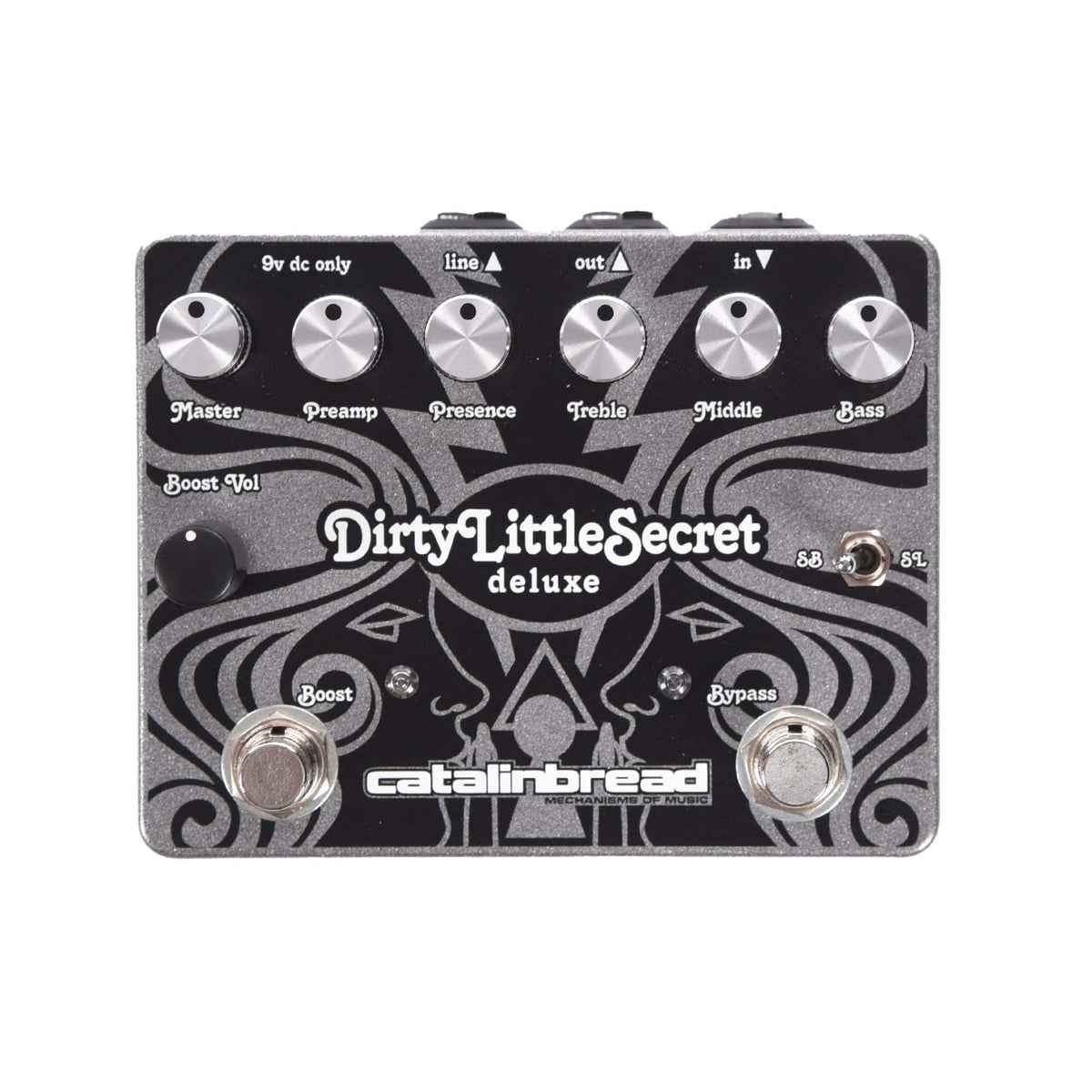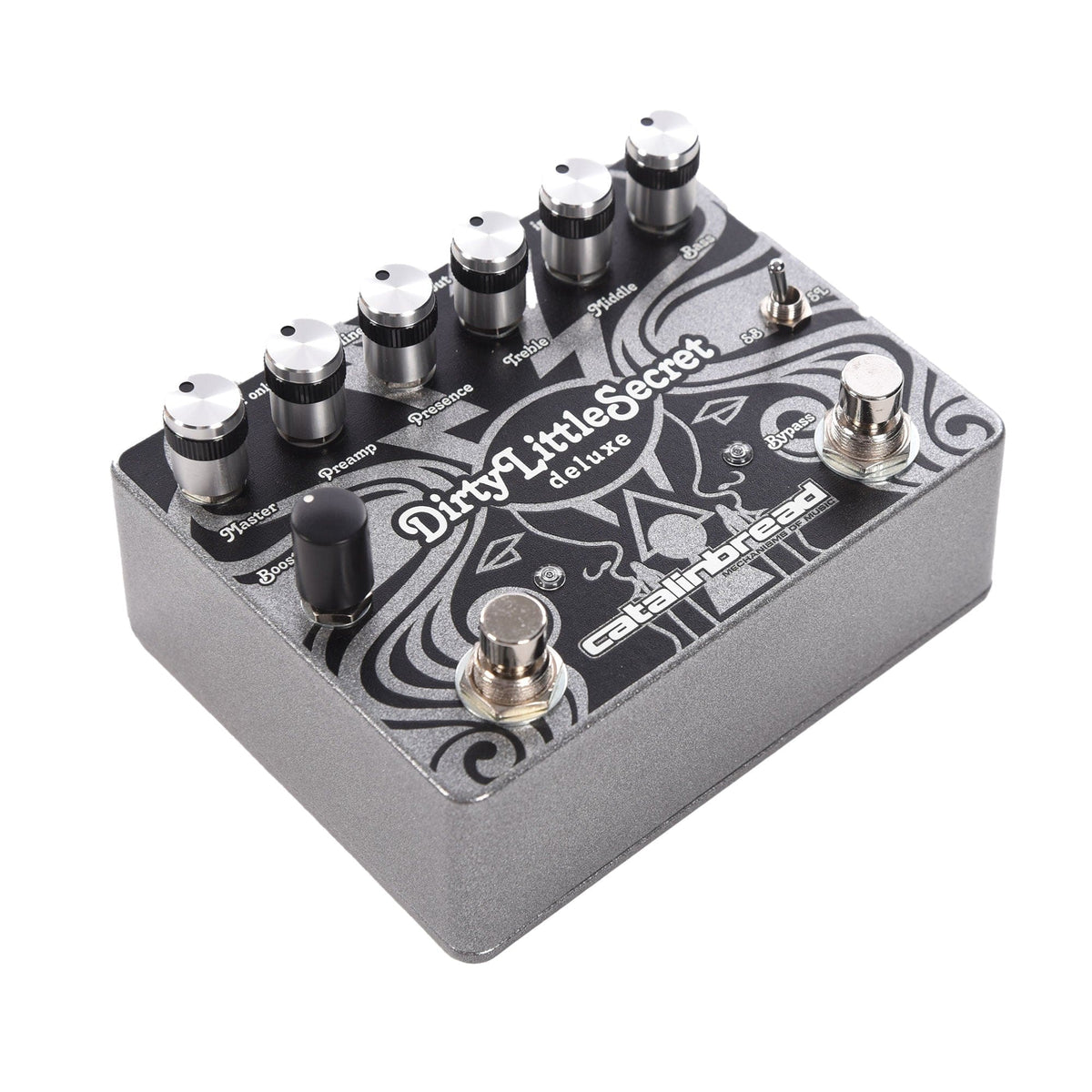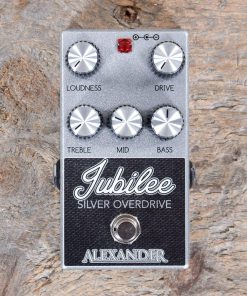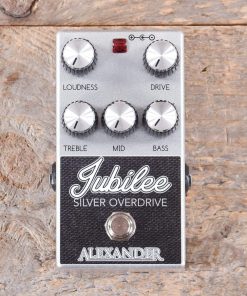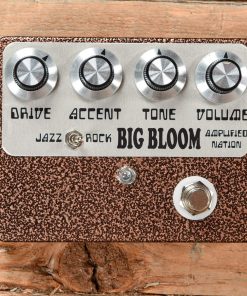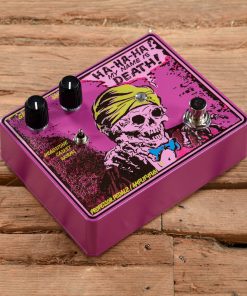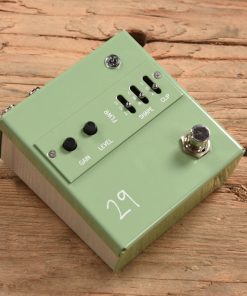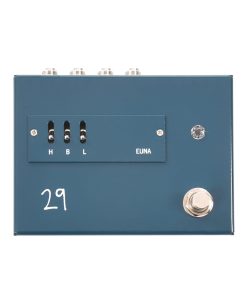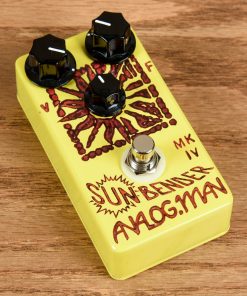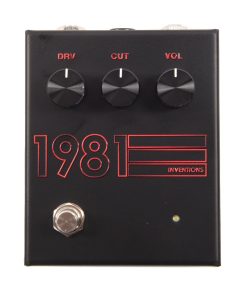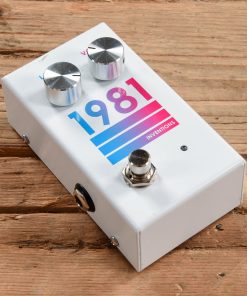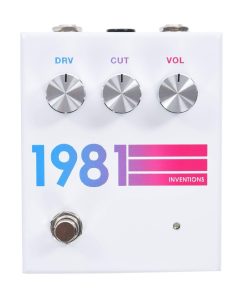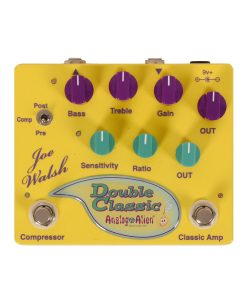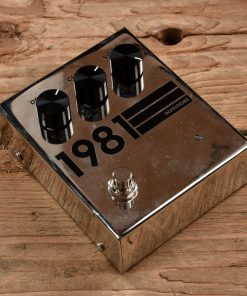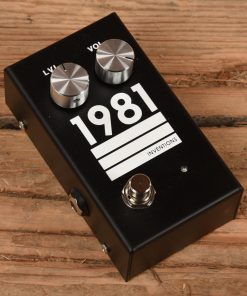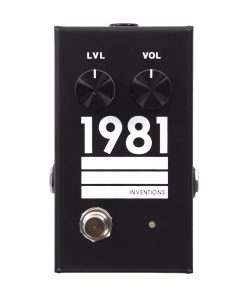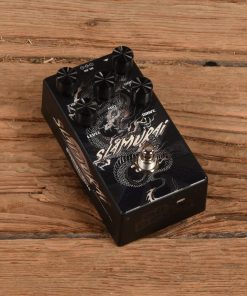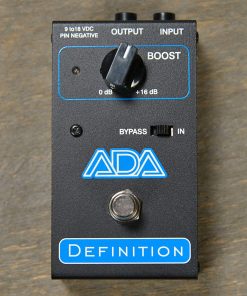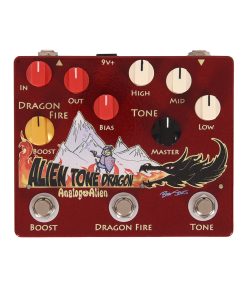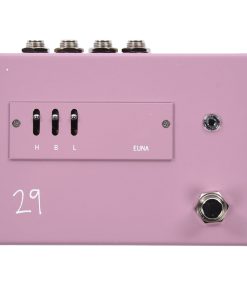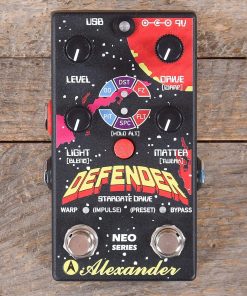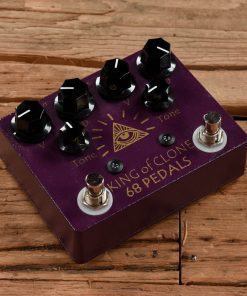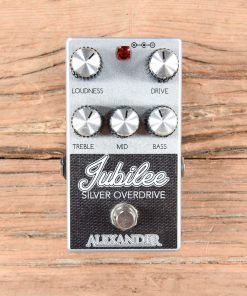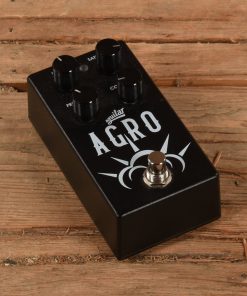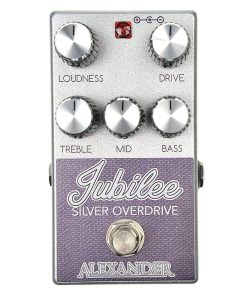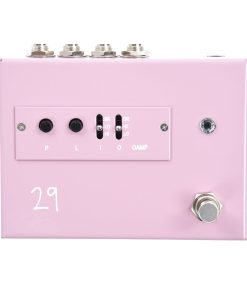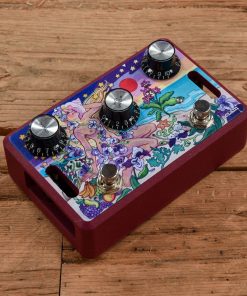Catalinbread Dirty Little Secret Deluxe Overdrive Pedal Catalinbread
$ 299,99 $ 120,00
The Dirty Little Secret Deluxe represents the next logical step in Marshall Plexi emulation, reaching beyond the preamp circuit and adding the rest of the amp for an extremely authentic take on everything inside that chassis. Our original DLS circuit has been tweaked and upgraded throughout, now featuring a phase inverter, power amp sim and output transformer as well as some new features and the most requested modifications for the original. One such addition is a toggle switch on the outside to select between Super Lead and Super Bass modes, and we’ve also externalized the Presence knob to easily dial in your preferred Marshall flavor. Also added is a piece of the Dirty Little Secret—a single preamp tube simulator—as a built-in boost circuit that can be used independently of the main circuit. You can run the boost and DLS in any order you like; put the boost before the DLS for a high-powered saturated tone or after to pummel the front end of your amp. A new tightness knob lets you shave off the sub-bass for a little extra clarity or completely attenuate the low end for some cool thrash metal tones. A Line Out jack gives you a dedicated +10dB output that you can use with a mixer or DAW, and you can use both outputs simultaneously. Between the Boost, order selector and the external Super Lead/Super Bass modes, the Dirty Little Secret Deluxe is engineered to be a total performance tool that does the line justice.
MASTER: A descriptor that’s normally a formality, this knob occurs before the phase inverter and output transformer rather than at the end of the circuit, just like a real amp. We designed the output stage to be more impervious to input saturation than most power sections, so really cranking it doesn’t alter the tone in an extremely noticeable way. However, those that plan to use the DLS DLX as an always-on can find some subtle sag and gentle compression living within the whole of the volume knob.
PREAMP: We’ve taken the original preamp control and tweaked it to deliver a wider gain range with more cleans on the lower end and more cranked Marshall tones on the higher end.
PRESENCE: Formerly an internal trimmer on the original, the Presence control is a powerful low-pass filter that attenuates frequencies by 3dB above 1.59KHz when turned all the way down, and the cutoff point climbs to an indistinguishable frequency by the end of the turn.
BOOST: The boost circuit is actually one of the tube emulation building blocks that make up the DLS itself. When you run the boost before the Dirty Little Secret, it acts as another “preamp tube” added to the front end of the device for some saturated JCM900 tones. When run after, it makes everything louder without sacrificing clarity. WARNING: please see note in “Effect Order” section below.
BOOST VOL: The boost circuit is actually one of the tube emulation building blocks that make up the DLS itself. When you run the boost before the Dirty Little Secret, it acts as another “preamp tube” added to the front end of the device for some saturated JCM900 tones. When run after, it makes everything louder without sacrificing clarity. This knob is a volume control for the Boost side, so at lower points in the knob’s turn, the boost signal can get below unity gain. This helps you dial in maximum tone shaping for combining the two effects.
TREBLE/MIDDLE/BASS: These are the classic Marshall amp tone stack values that we all know and love, highly interactive as always. These values are taken directly from the amps themselves, and the entire tonestack circuit is passive, meaning that noon is not flat on either knob. The Bass control in particular isn’t flat at noon, and most players of actual Plexi amps keep this control pretty low. When switching between modes, the TMB tonestack values are swapped as well, lending complimentary toneshaping to each.
SL/SB TOGGLE: The most requested mod in the history of Catalinbread has arrived; a toggle to switch between both modes. Impossible in the original due to space and function constraints, this allows you to switch between Super Lead mode, a cutting, upper-midrange-heavy tone, and Super Bass mode, a smoother, smokier tone with a lower midrange emphasis.
Fast Shipping with Professional Packaging
We offer a wide range of shipping options due to our long-standing partnerships with UPS, FedEx and DHL. Our warehouse staff are trained to pack your goods exactly according to the specifications we offer. Before shipping the goods are thoroughly examined and secured. Every day, we send thousands of packages to clients from all over the world. Our determination to be the biggest online retailer in the world is shown by this. The warehouses are located in Europe as much as they are in USA.
Note: Orders with more than one product will be assigned a distinct processing time, dependent on the particular item.
Before shipping, we will examine the items ordered thoroughly before sending the items. The majority of orders are shipped within 48 hrs. The delivery estimate is between 3-7 days.
Returns
The stock is constantly changing and cannot be fully controlled by us because of the involvement of several parties including the factory and our warehouse. Stock levels can fluctuate at any given time. Please be aware that it is possible that your order could become unavailable even after you've placed your order.
Our policy is valid for a period of 30 days. If 30 days have passed by since your purchase however, we're unable to give an exchange or refund.
In order to be eligible for a refund your product must be unopened and in the same state as you received it. It should also be in the original package.
Related products
Effects and Pedals / Overdrive and Boost
Effects and Pedals / Overdrive and Boost
Effects and Pedals / Overdrive and Boost
Effects and Pedals / Overdrive and Boost
Effects and Pedals / Overdrive and Boost
Effects and Pedals / Overdrive and Boost
Analog Alien Rumble Seat Overdrive/Delay/Reverb Pedal Analog Alien
Effects and Pedals / Overdrive and Boost
Abominable Electronics Oppressive Cult Destroyer Abominable Electronics
Effects and Pedals / Overdrive and Boost
Effects and Pedals / Overdrive and Boost
Effects and Pedals / Overdrive and Boost
Effects and Pedals / Overdrive and Boost
1981 Inventions Special Edition Stranger DRV Overdrive Pedal 1981 Inventions
Effects and Pedals / Overdrive and Boost
Effects and Pedals / Overdrive and Boost
Alexander Pedals Jubilee Silver Overdrive Pedal Alexander Pedals
Effects and Pedals / Overdrive and Boost
1981 Inventions DRV Overdrive White Hyperfade 1981 Inventions
Effects and Pedals / Overdrive and Boost
Analog Alien Joe Walsh Double Classic Overdrive Pedal Analog Alien
Effects and Pedals / Overdrive and Boost
Effects and Pedals / Overdrive and Boost
Effects and Pedals / Overdrive and Boost
Effects and Pedals / Overdrive and Boost
Effects and Pedals / Overdrive and Boost
Effects and Pedals / Overdrive and Boost
Analog Alien Alien Tone Dragon Overdrive/Boost Pedal Analog Alien
Effects and Pedals / Overdrive and Boost
29 Pedals Special Run Crunch Berry EUNA Elite Unity Amplifier Input Driver 29 Pedals
Effects and Pedals / Overdrive and Boost
Effects and Pedals / Overdrive and Boost
Effects and Pedals / Overdrive and Boost
Effects and Pedals / Overdrive and Boost
Effects and Pedals / Overdrive and Boost
Analogman King of Tone V4 with Both Side High Gain Option Analogman
Effects and Pedals / Overdrive and Boost
Effects and Pedals / Overdrive and Boost
Effects and Pedals / Overdrive and Boost
Effects and Pedals / Overdrive and Boost
Effects and Pedals / Overdrive and Boost
